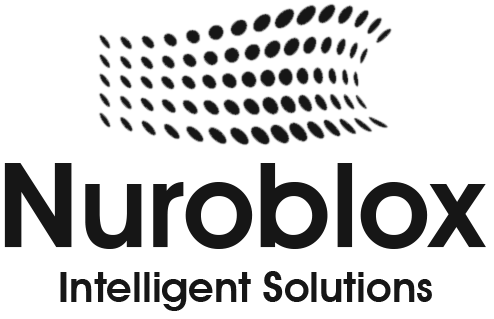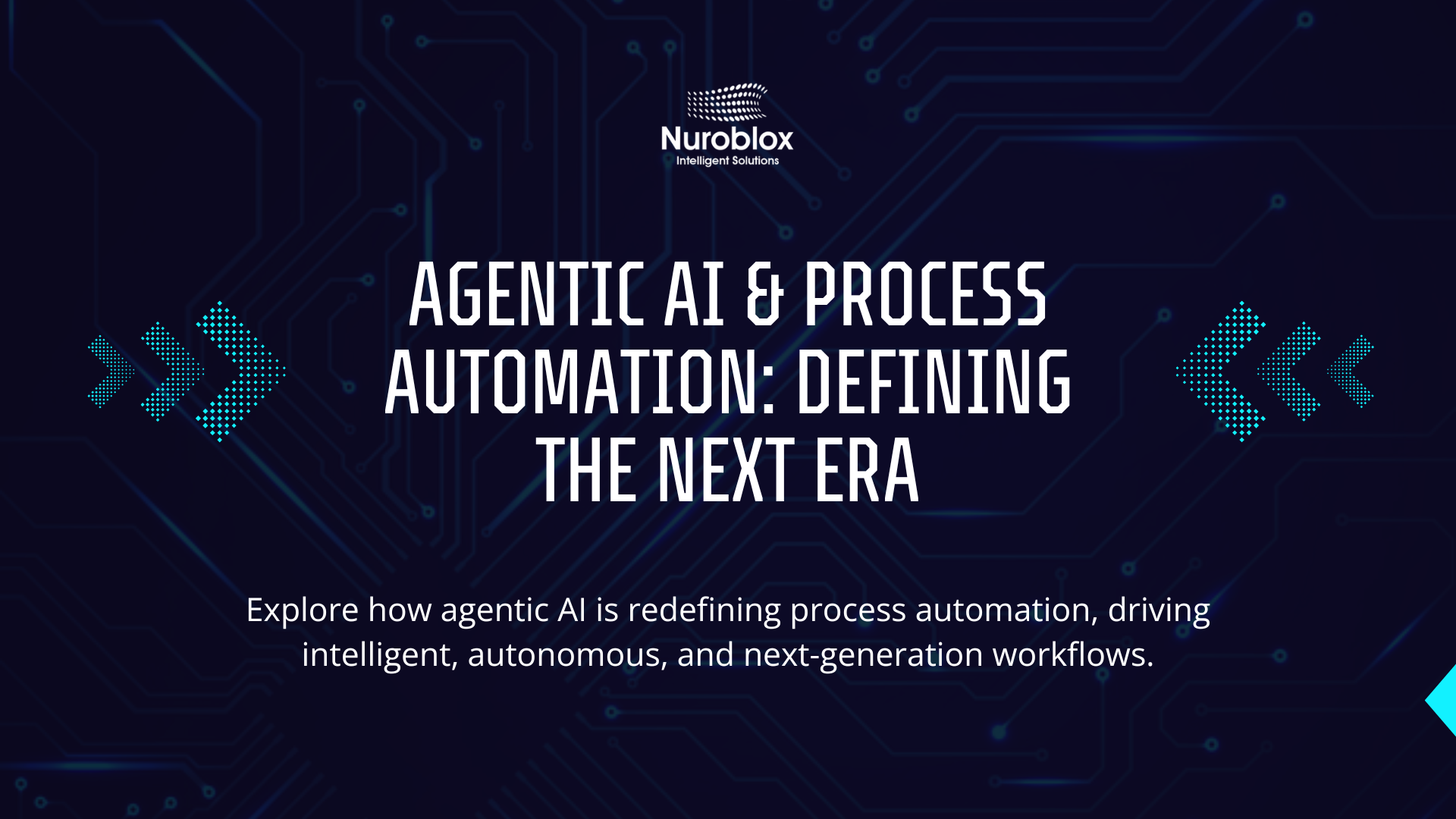Agentic AI & Process Automation: Defining the Next Era
In today’s competitive landscape, businesses are in a perpetual race for efficiency. For years, Robotic Process Automation (RPA) was the champion, automating repetitive, rule-based tasks with precision. Then came intelligent automation, layering AI to handle more complex data. But we are now at the precipice of a new, more profound transformation, one driven by Agentic AI. 65% of large enterprises are moving beyond mere experimentation into full-fledged pilot programs for AI agents, a near-doubling from the previous quarter. This isn’t just another incremental step; it’s a leap into a future where automation is not just executed, but orchestrated, reasoned, and adapted autonomously.
This post explores the rise of Agentic AI and its pivotal role in defining the next era of business process automation. We will dissect what makes this technology fundamentally different, explore its tangible benefits through data-driven examples, and provide a strategic roadmap for implementation. This is for the leaders, innovators, and strategists who see beyond automating tasks and aim to build truly autonomous, resilient, and intelligent enterprises.
What is Agentic AI? The Dawn of Autonomous Action
At its core, Agentic AI refers to AI systems, or “agents,” that can operate autonomously to achieve goals. Unlike traditional automation that follows rigid, predefined scripts, agentic systems can perceive their environment, make independent decisions, break down complex goals into sub-tasks, and execute them without continuous human supervision. They are not just doing but thinking and acting.
The key differentiator lies in autonomy and goal-orientation.
- Traditional RPA is task-centric. You program a bot to copy data from cell A1 to B1. If the layout changes, the bot fails .
- Intelligent Automation adds a layer of AI, allowing a bot to, for example, use optical character recognition (OCR) to read an invoice. It’s smarter, but still largely reactive .
- Agentic AI is goal-centric. You give an agent a goal, such as “process this invoice.” The agent then autonomously plans and executes the necessary steps: opening the email, extracting the data, validating it against a purchase order in the ERP system, flagging discrepancies for review, and routing it for payment approval. If it encounters a new invoice format, it adapts its strategy to achieve the original goal.
This paradigm shift is powered by a convergence of advanced large language models (LLMs) for reasoning, planning algorithms, and the ability to use “tools” like APIs to interact with other software. These agents can orchestrate entire end-to-end processes, collaborating with other agents, robots, and human experts to navigate unpredictable business environments.
The Unprecedented Benefits of Agentic Business Process Automation
Adopting agentic AI is not merely about incremental improvements; it’s about unlocking transformative gains in efficiency, scalability, and strategic capacity. The data is compelling: organizations implementing agentic workflows report up to a 40% improvement in efficiency and a 30% reduction in operational costs.
Automating Complex, End-to-End Workflows
A significant advantage of agentic AI is its ability to manage entire processes from start to finish. Traditional automation often digitizes fragments of a workflow, leaving gaps that still require manual intervention. Autonomous AI agents bridge these gaps.
Consider a retail bank’s credit-risk memo process. Previously, relationship managers spent weeks manually pulling data from over ten different sources to write and iterate these complex memos. McKinsey developed an agentic proof-of-concept where AI agents assist by extracting data, drafting memo sections, and suggesting follow-up questions. The result? A potential 20% to 60% increase in productivity and a 30% improvement in credit turnaround time. The role of the human analyst shifts from manual drafter to strategic overseer.
Driving Radical Efficiency and Scalability
Agentic AI dramatically reduces the need for human intervention in cognitive tasks, freeing employees to focus on high-value strategic work. A 2025 global survey found that 71% of organizations deploying intelligent agents use them specifically for process automation to reduce costs and increase output.
Because these agents are not bound by linear scripts, they can handle a vast range of scenarios and scale operations without a proportional increase in human labor. This is particularly crucial in dynamic environments where workloads fluctuate. Agentic systems, often built on cloud-native architecture, can elastically scale to meet demand without performance degradation.
Enhancing Decision-Making with Real-Time Data
Agentic AI excels at real-time data analysis, enabling smarter, faster decisions. An agent can continuously monitor data streams, identify patterns, predict outcomes, and take optimal actions aligned with business objectives.
In supply chain management, for instance, an agentic system can analyze real-time data from sales, supplier deliveries, and market trends. It can predict a surge in demand for a product, automatically adjust inventory reorder points, and schedule orders with suppliers all without waiting for human input. If a sudden disruption occurs, the agent can recalibrate on the fly, rerouting shipments to maintain operational continuity.

The application of agentic AI is not theoretical; it’s actively reshaping core processes across major sectors. From finance to healthcare, autonomous agents are delivering measurable value.
Finance and Accounting
The financial sector, a hub of data-heavy and rule-intensive operations, is a natural fit for agentic AI.
- Accounts Payable – AI agents can autonomously extract data from invoices, validate it against purchase orders, and route it for approval, flagging discrepancies automatically. This reduces errors and accelerates payment cycles.
- Fraud Detection – Agentic systems perform real-time fraud detection by continuously monitoring transactions, identifying anomalous patterns, and initiating containment protocols instantly.
- Loan Underwriting – Agents can accelerate loan underwriting by validating application data, assessing risk against policies, and ensuring compliance, cutting processing times while reducing credit risk.
Supply Chain and Logistics
Agentic AI is bringing unprecedented agility to supply chains, which are often plagued by disruptions and inefficiencies.
- Dynamic Route Optimization – DHL uses an AI-powered logistics system that autonomously adjusts delivery schedules based on real-time traffic, weather, and demand, ensuring more efficient deliveries.
- Inventory Management – A multi-agent system can handle the entire inventory lifecycle. A “data management agent” aggregates sales data, a “data analysis agent” predicts future demand, and an “inventory manager agent” adjusts stock levels and automates reorders.
Customer Service
The era of rigid, frustrating chatbots is ending. Agentic AI is enabling hyper-personalized, proactive customer support.
- Autonomous Resolution – Agents can now take complete ownership of support issues. They proactively identify problems (e.g., a service outage), take corrective action (e.g., issue a credit), and resolve the issue often before the customer even reports it.
- Consistent Multichannel Support – Agentic AI maintains context as a customer moves from a chatbot to email to a phone call, eliminating the need for them to repeat information and creating a frictionless experience. Enterprises deploying such agents have reported reductions in support costs by up to 60%.
Navigating the Agentic Transformation – A Strategic Approach
The transition to agentic automation is accelerating. Nearly 80% of organizations are already using AI agents in some capacity, and an overwhelming 96% plan to expand their use in 2025. Enterprises are betting big, with 43% allocating over half of their AI budgets to agentic AI. However, successful implementation requires more than just technology; it demands a strategic approach centered on governance, integration, and human-agent collaboration.
Build on a Foundation of Governance and Trust
The autonomy of agentic AI is its greatest strength, but it also introduces risks. Issues like LLM “hallucinations” (confident but false outputs) can cascade into flawed actions if not properly managed. Establishing a robust governance framework is non-negotiable.
- Human-in-the-Loop (HITL) – Implement validation checkpoints where humans approve critical decisions. This blends autonomous efficiency with human judgment, building trust and catching errors before they escalate.
- Guardrails and Auditing – Use platforms that allow you to set clear operational boundaries (guardrails) for agents and maintain detailed logs of their decisions and actions for auditing and compliance .
- Security and Data Privacy – Ensure agents access sensitive data through secure, controlled mechanisms with robust encryption and access management.
Prioritize Integration and Orchestration
For agents to be effective, they must seamlessly connect with existing enterprise systems like ERPs and CRMs . An agentic automation platform should provide comprehensive connectivity, ideally through a flexible, API-driven architecture. Furthermore, orchestration is key to managing a multi-agent ecosystem. A central orchestration layer coordinates the actions of different agents, robots, and humans, ensuring that complex workflows are executed reliably and align with business goals.
Foster a Human-Agent Collaborative Workforce
The most successful implementations of agentic AI will not be about replacing humans but augmenting them. By automating complex but routine cognitive labor, agentic AI frees human employees to focus on what they do best: strategic thinking, creative problem-solving, and building relationships. The future of work is a hybrid model where humans set the goals and provide oversight, while AI agents handle the autonomous execution. This symbiotic partnership elevates the nature of human work and unlocks new levels of productivity and innovation.
The shift toward agentic AI is not a distant trend; it is the immediate future of business process automation. Organizations that continue to view automation solely through the lens of repetitive task execution will be outmaneuvered by those who embrace goal-oriented, autonomous systems. The question is no longer if agentic AI will redefine your operations, but how you will architect your business to harness its transformative power. How will you begin redesigning your core processes to thrive in an autonomous world?


